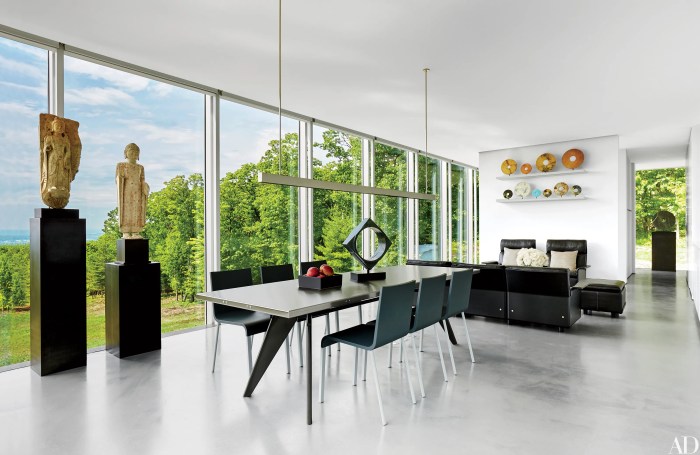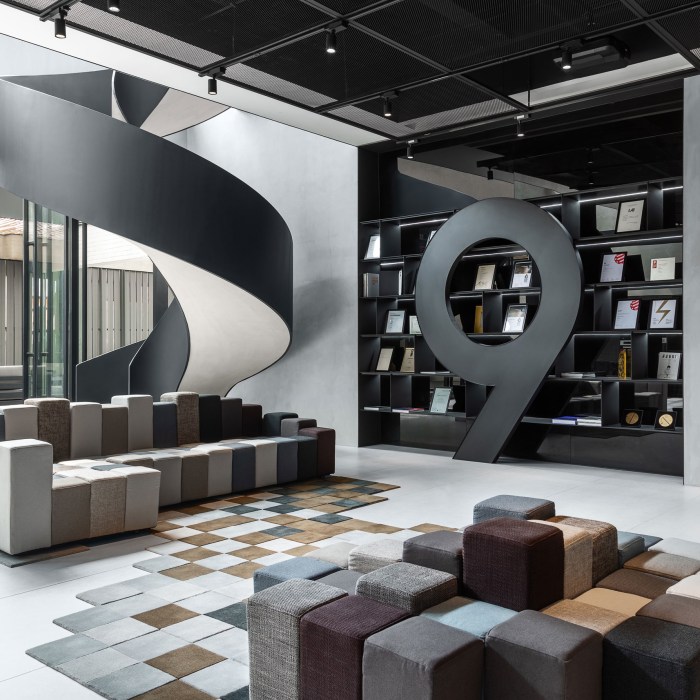Exploring the Impact of Architecture and Interior Design

Delve into the world of architecture and interior design, where spaces come alive with creativity and functionality, leaving a lasting impression on all who experience them.
This comprehensive guide will walk you through the importance, elements, sustainability practices, and historical influences of architecture and interior design.
Importance of Architecture and Interior Design

Architecture and interior design play a crucial role in shaping the spaces we live, work, and interact in. They not only enhance the aesthetics of buildings but also significantly impact the functionality and overall experience of a space.
Enhancing Aesthetics and Functionality
Well-designed architecture and interior design can transform a dull and uninspiring space into a vibrant and inviting environment. By carefully considering elements such as lighting, color schemes, materials, and layout, designers can create spaces that are not only visually appealing but also practical and efficient.
Positive Impact on People's Lives
- Creating Comfortable Living Spaces: Thoughtfully designed homes with proper ventilation, natural light, and ergonomic layouts can improve residents' quality of life and overall well-being.
- Promoting Productivity in Workspaces: Offices with well-designed interiors that prioritize functionality and employee comfort can boost productivity and creativity among workers.
- Enhancing Public Spaces: Architectural landmarks and well-designed public spaces can foster a sense of community pride and encourage social interaction among residents.
Shaping the Built Environment
Architecture and interior design not only influence individual buildings but also contribute to the overall urban landscape. By creating cohesive and visually appealing structures, designers can enhance the character of cities and towns, creating a more pleasant and cohesive environment for residents and visitors alike.
Elements of Architecture and Interior Design
Understanding the key elements in architecture and interior design is crucial for creating aesthetically pleasing and functional spaces.
Key Elements in Architecture
- Form:Refers to the overall shape and structure of a building, including its massing, proportions, and style.
- Space:Involves the arrangement of interior and exterior areas within a building, considering functionality and circulation.
- Light:Plays a vital role in highlighting architectural features, creating ambiance, and influencing the mood of a space.
- Materials:The choice of materials such as wood, glass, concrete, or steel can impact the aesthetics, durability, and sustainability of a structure.
Fundamental Elements in Interior Design
- Color:Color schemes can set the tone and atmosphere of a room, affecting the perception of space and mood of occupants.
- Texture:The tactile quality of surfaces and finishes adds depth and visual interest to interior spaces.
- Pattern:Patterns in textiles, wallpapers, or flooring can create visual impact and add personality to a room.
- Scale:Refers to the size and proportion of furniture, fixtures, and decorative elements in relation to the space they occupy.
By utilizing different combinations of these elements, architects and interior designers can create a wide range of styles and themes, from minimalistic and modern to traditional and eclectic. The interplay of form, space, light, materials, color, texture, pattern, and scale allows for endless possibilities in designing unique and innovative spaces.
Sustainable Practices in Architecture and Interior Design

When it comes to sustainable practices in architecture and interior design, the focus is on creating environmentally friendly and energy-efficient spaces that reduce the negative impact on the planet. By incorporating sustainable design principles and techniques, architects and interior designers can help contribute to a greener future.
Eco-Friendly Materials and Energy-Efficient Solutions
Using eco-friendly materials and energy-efficient solutions is essential in sustainable architecture and interior design. Here are some examples:
- Utilizing recycled materials such as reclaimed wood or recycled glass in construction to reduce waste and minimize environmental impact.
- Installing energy-efficient lighting systems, like LED lights, to reduce energy consumption and lower electricity bills.
- Incorporating passive design strategies such as natural ventilation and daylighting to reduce the need for artificial heating and cooling.
Importance of Sustainability in Architecture and Interior Design
Sustainability is crucial in both architecture and interior design as it not only helps protect the environment but also improves the health and well-being of occupants. By designing buildings and spaces that are energy-efficient, use eco-friendly materials, and promote a connection to nature, architects and interior designers can create healthier and more sustainable environments for people to live and work in.
Historical Influences on Architecture and Interior Design
Throughout history, various architectural styles have left a lasting impact on modern-day designs. These influences have shaped the way we perceive and create spaces, reflecting the artistic and cultural values of different time periods.
Ancient Egyptian Architecture
Ancient Egyptian architecture, characterized by massive stone structures such as pyramids and temples, laid the foundation for monumental architecture. The use of columns, hieroglyphics, and intricate decorations influenced future architectural styles.
Gothic Architecture
The Gothic period in Europe introduced pointed arches, ribbed vaults, and flying buttresses, creating tall, light-filled cathedrals. This style emphasized verticality and light, setting the stage for the Renaissance and Baroque periods.
Art Nouveau Movement
Emerging in the late 19th century, the Art Nouveau movement embraced organic forms, asymmetry, and decorative elements inspired by nature. This style influenced interior design with its emphasis on craftsmanship and innovative use of materials.
Modernism
The Modernist movement of the 20th century prioritized simplicity, functionality, and the use of new materials such as steel and glass. Architects like Le Corbusier and Frank Lloyd Wright reshaped architectural norms, focusing on minimalism and clean lines.
Summary
As we conclude our exploration, it becomes evident that architecture and interior design are not just about structures and spaces but about creating environments that inspire, uplift, and endure through time.
Quick FAQs
How do architecture and interior design impact our daily lives?
Well-designed spaces can boost productivity, improve mood, and create a sense of well-being.
What are some key elements in interior design?
Elements like color, texture, pattern, and scale play a crucial role in creating visually appealing spaces.
Why is sustainability important in architecture and interior design?
Embracing sustainable practices ensures a greener future by reducing environmental impact and promoting eco-friendly solutions.

